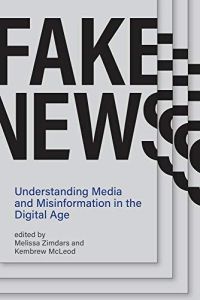Únase a getAbstract para acceder al resumen.

Únase a getAbstract para acceder al resumen.
Melissa Zimdars and Kembrew McLeod
Fake News
Understanding Media and Misinformation in the Digital Age (Information Policy)
MIT Press, 2020
¿De qué se trata?
Academics offer their ideas on the prevalence and impact of misinformation – and what to do about it.
Recommendation
Communications and media professors Melissa Zimdars and Kembrew McLeod offer a well-edited, well-curated collection of academic essays addressing false news stories in politics, the erosion of serious journalism, and the failure of technology and social media self-regulation to control lies and hateful propaganda. The 30 authors of these wide-ranging pieces do not shy away from controversy as they analyze the issues and pose relevant, thought-provoking questions.
Summary
About the Authors
Communications and media professors Melissa Zimdars (author of Watching Our Weights) and Kembrew McLeod (author of Cutting Across Media, Creative License and other titles) compiled and contributed to this collection for the Information Policy Series. Contributors: Mark Andrejevic, Benjamin Burroughs, Nicholas Bowman, Mark Brewin, Elizabeth Cohen, Colin Doty, Dan Faltesek, Johan Farkas, Cherian George, Tarleton Gillespie, Dawn R. Gilpin, Gina Giotta, Theodore Glasser, Amanda Ann Klein, Paul Levinson, Adrienne Massanari, Sophia A. McClennen, Kembrew McLeod, Panagiotis Takis Metaxas, Paul Mihailidis, Benjamin Peters, Whitney Phillips, Victor Pickard, Danielle Polage, Stephanie Ricker Schulte, Leslie-Jean Thornton, Anita Varma, Claire Wardle, Melissa Zimdars and Sheng Zou.


















Comment on this summary